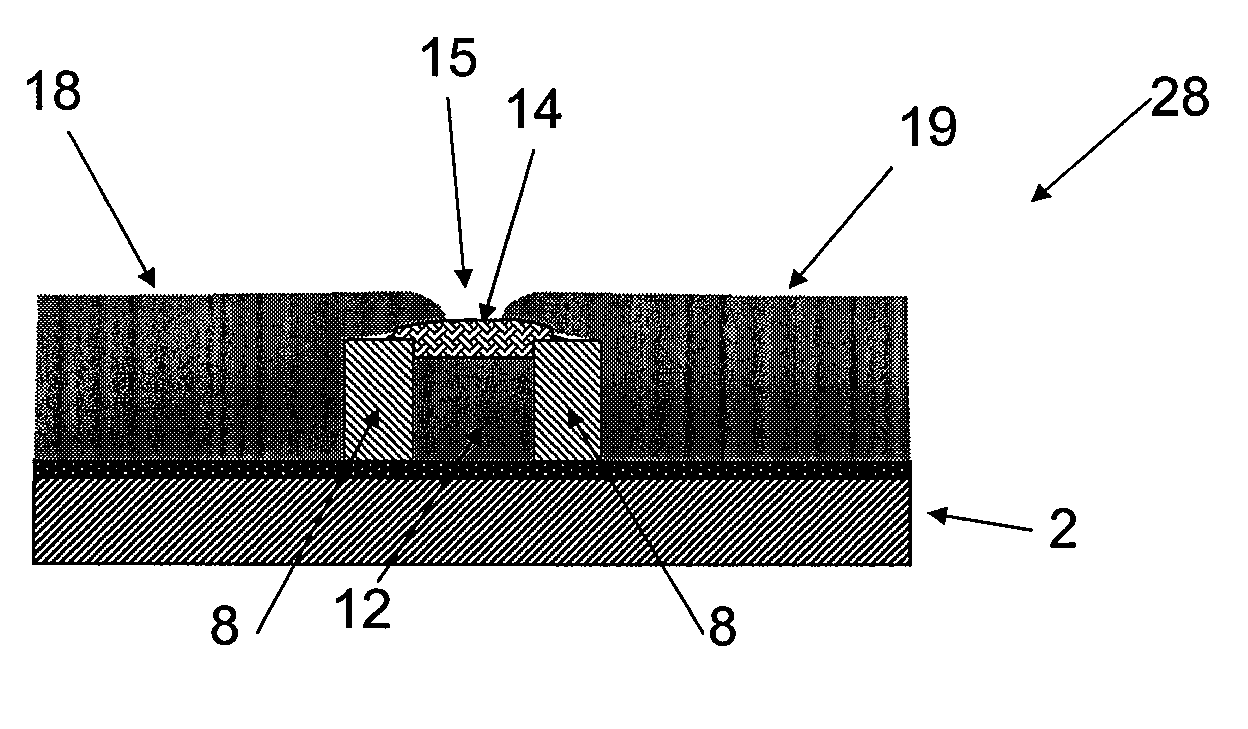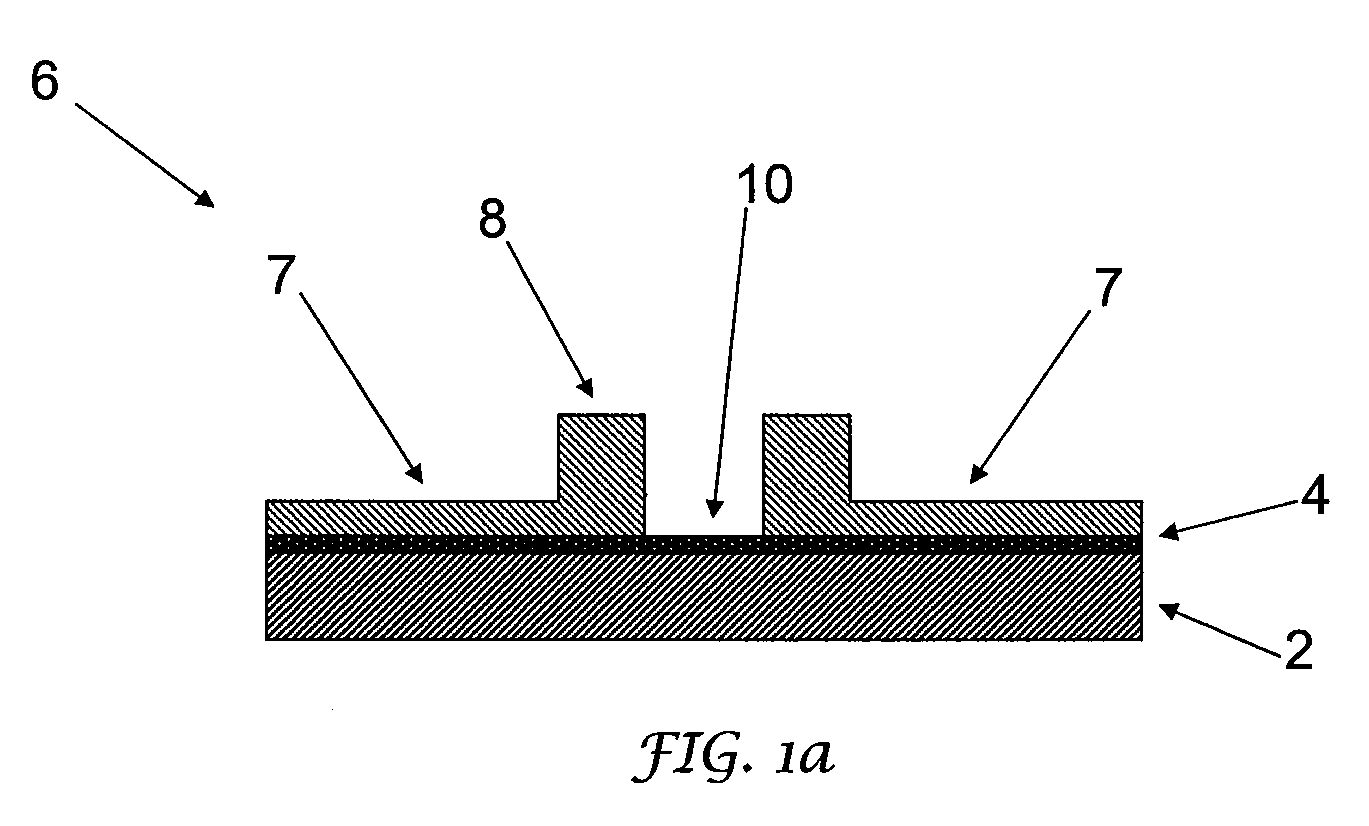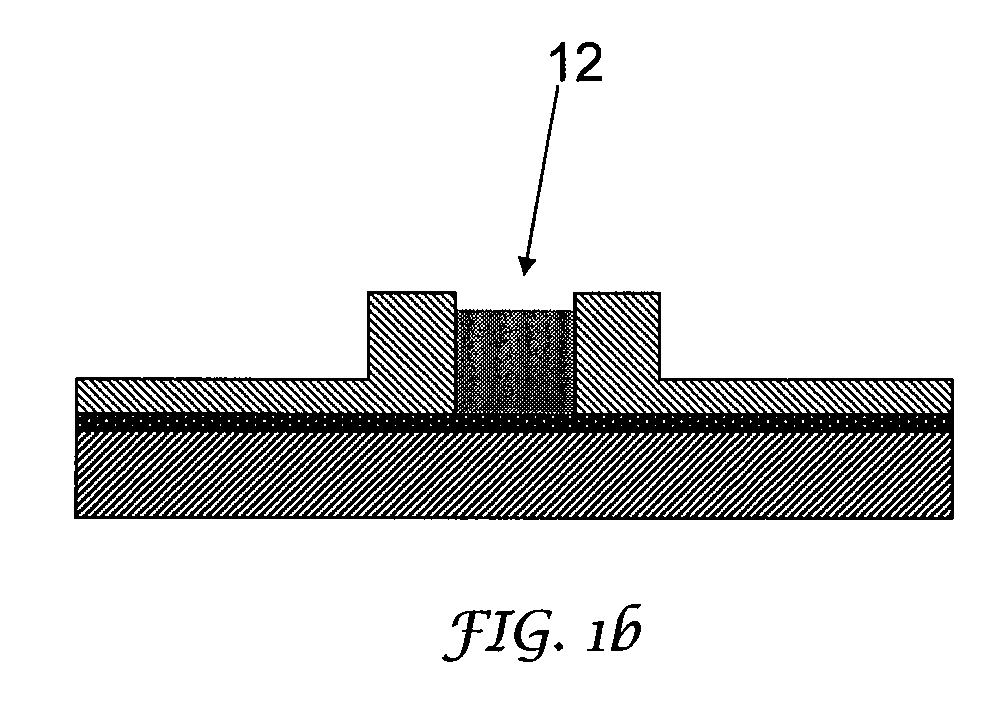Conductive interconnects
a technology of interconnects and conductive materials, applied in the field of conductive interconnects, can solve problems such as cost and practical difficulties, and achieve the effect of increasing the manufacturing yield of the process
- Summary
- Abstract
- Description
- Claims
- Application Information
AI Technical Summary
Benefits of technology
Problems solved by technology
Method used
Image
Examples
Embodiment Construction
[0017]Referring to FIG. 1a a carrier 2, for example a film of a plastics material, has a conductive surface 4. A multilevel dielectric structure 6 is formed on the conductive surface 4, for example by photolithography using a material such as SU8, or by UV micromoulding. The dielectric structure 6 includes a pair of upstanding walls 8 which define a trench 10 between them, and regions of dielectric material 7 outside the trench 10 and adjacent to the walls 8. The base of the trench 10 comprises part of the conductive surface 4 between the walls 8. If UV micromoulding is used to form the dielectric structure 6, then the base of the trench 10 may be cleared of any residue by plasma, or UV ozone ashing to ensure that it is presents a conductive surface.
[0018]In FIG. 1b, the carrier is placed in a standard electroforming system, where the conductive layer 4 forms the cathode. A metal (typically nickel, gold, copper or a combination thereof is deposited to form a first conductive interco...
PUM
| Property | Measurement | Unit |
|---|---|---|
| conductive | aaaaa | aaaaa |
| semiconductor | aaaaa | aaaaa |
| dielectric | aaaaa | aaaaa |
Abstract
Description
Claims
Application Information
 Login to View More
Login to View More - R&D
- Intellectual Property
- Life Sciences
- Materials
- Tech Scout
- Unparalleled Data Quality
- Higher Quality Content
- 60% Fewer Hallucinations
Browse by: Latest US Patents, China's latest patents, Technical Efficacy Thesaurus, Application Domain, Technology Topic, Popular Technical Reports.
© 2025 PatSnap. All rights reserved.Legal|Privacy policy|Modern Slavery Act Transparency Statement|Sitemap|About US| Contact US: help@patsnap.com



